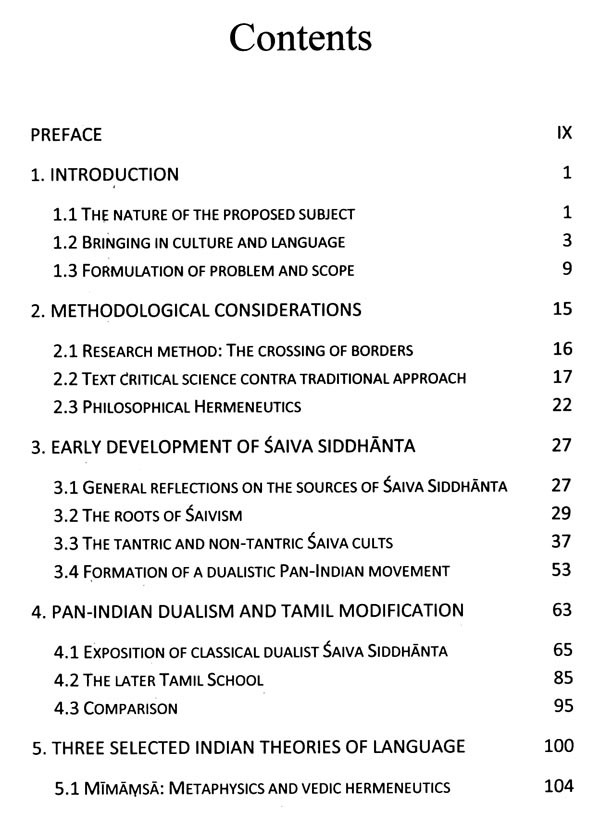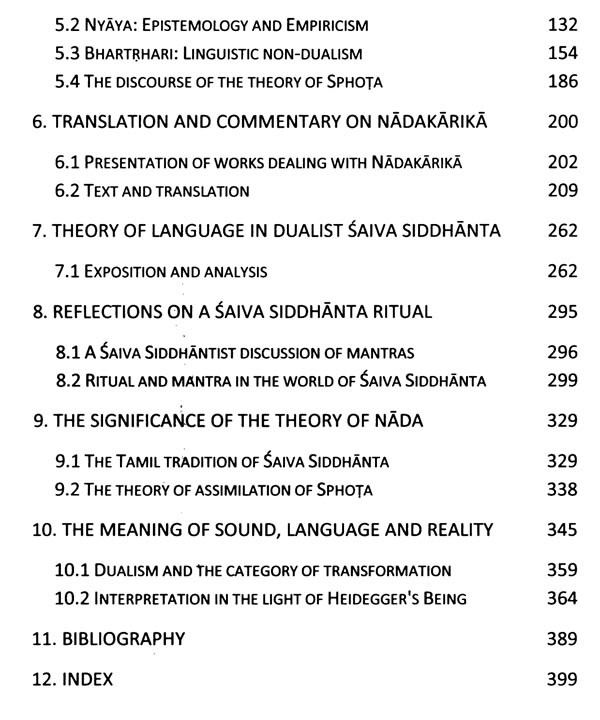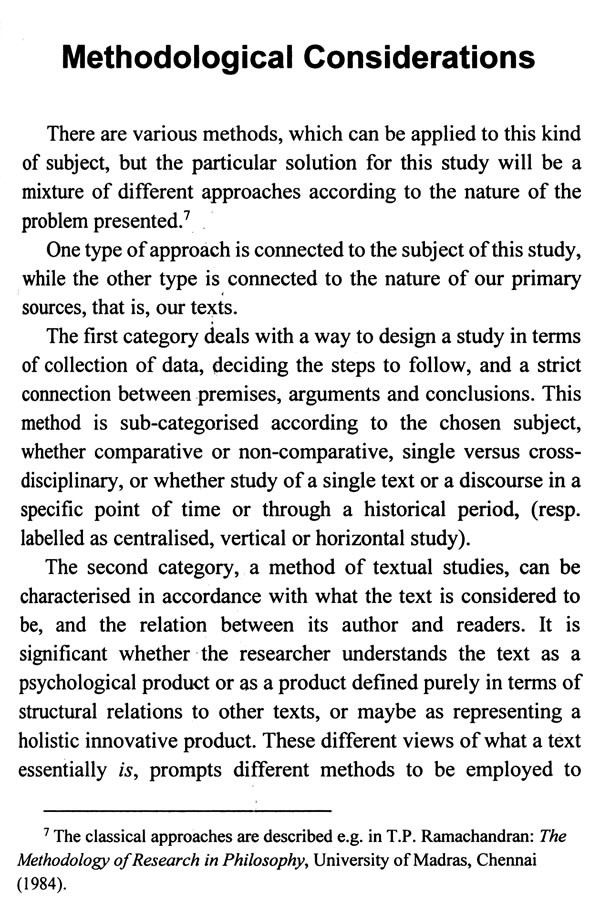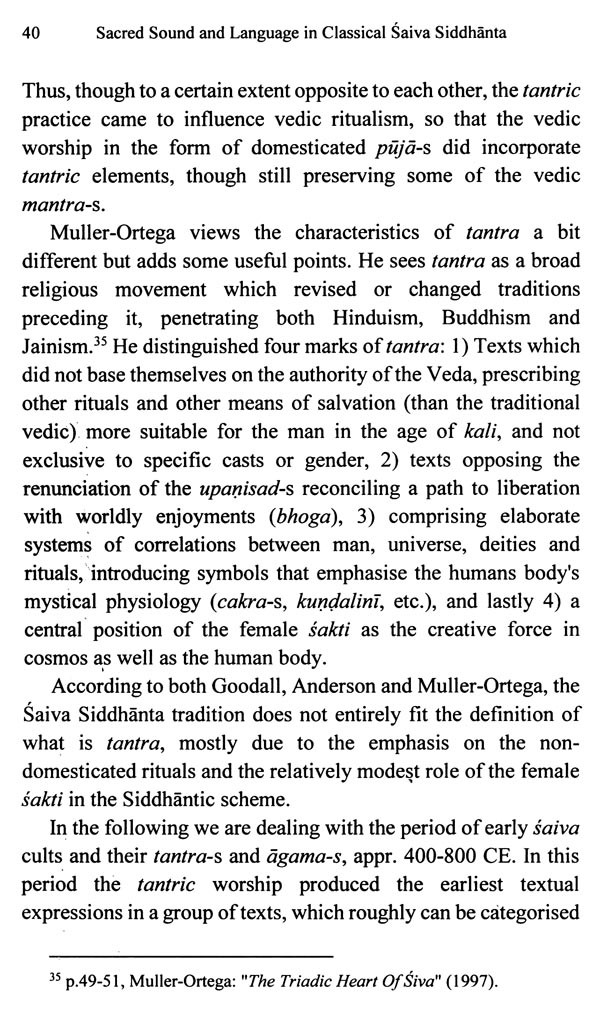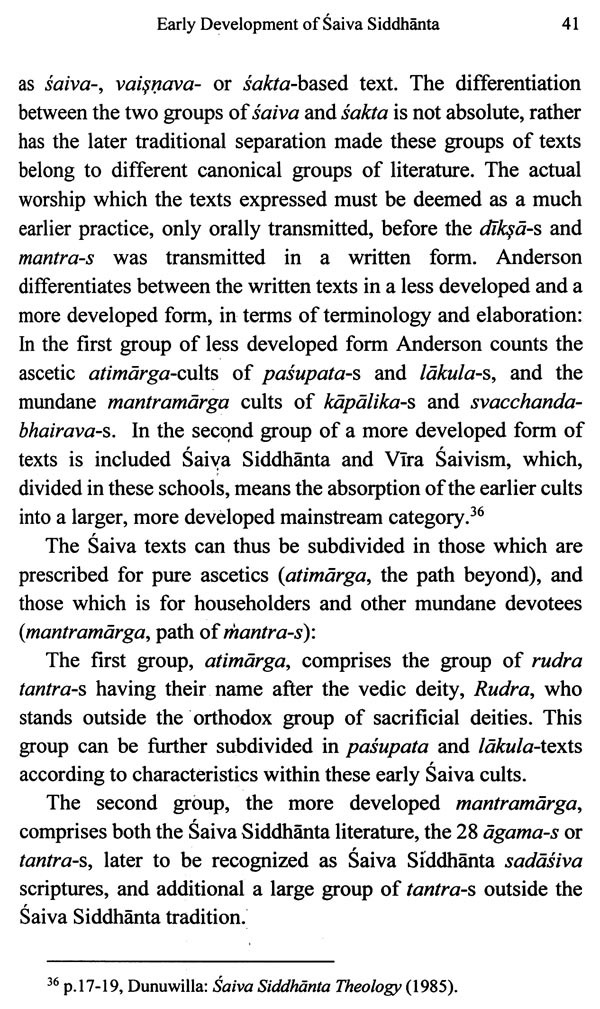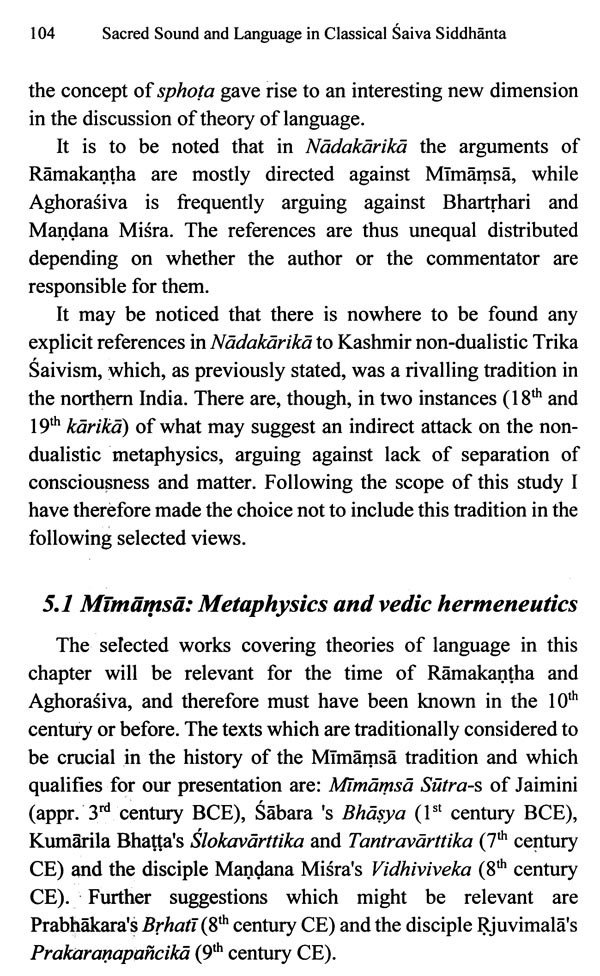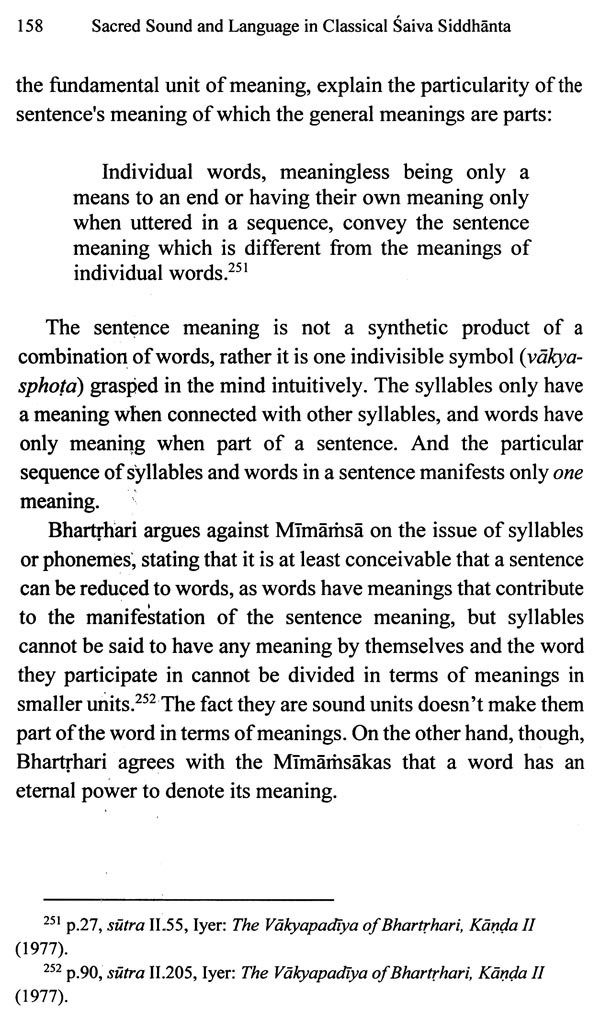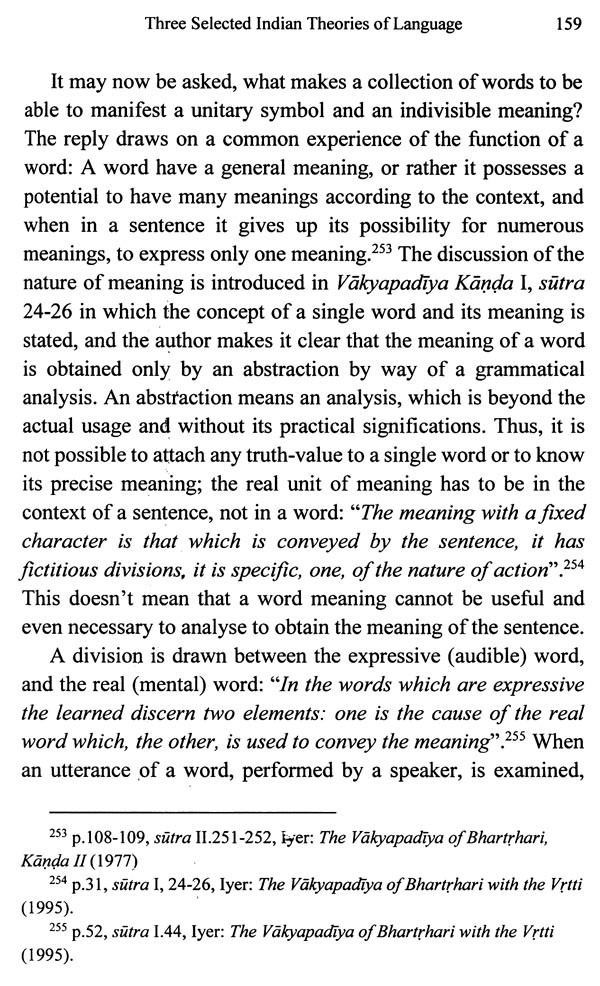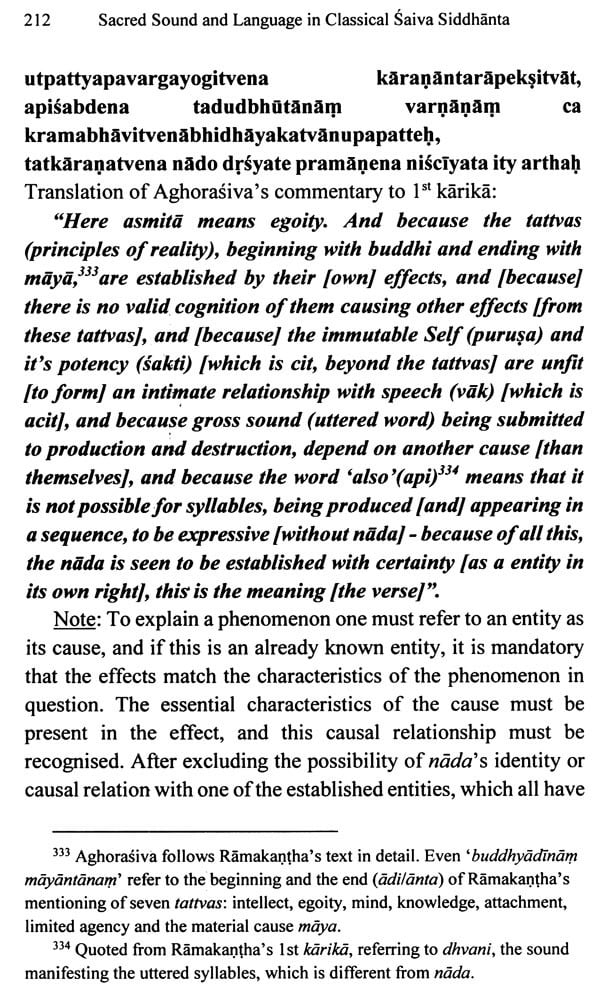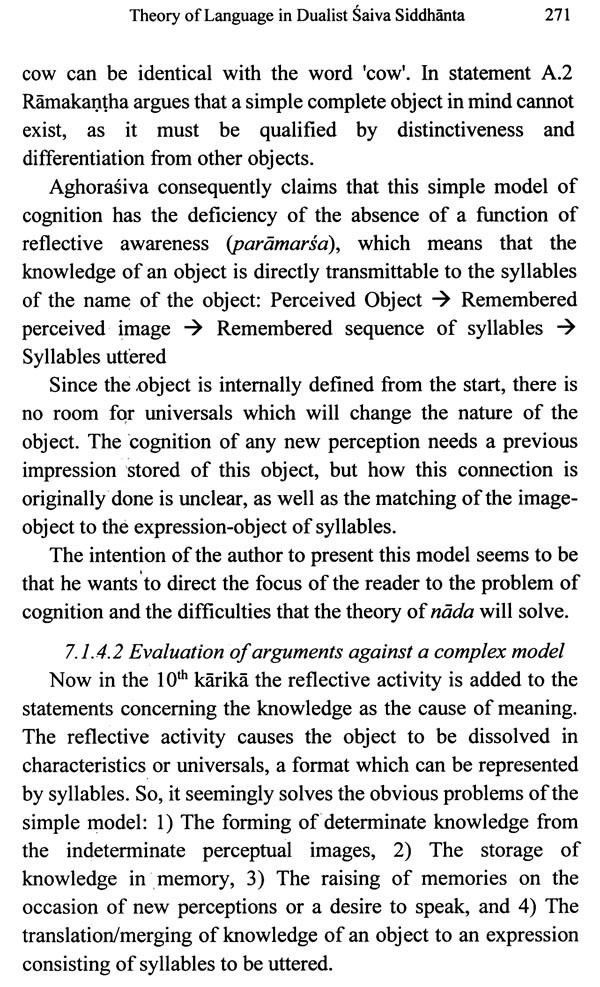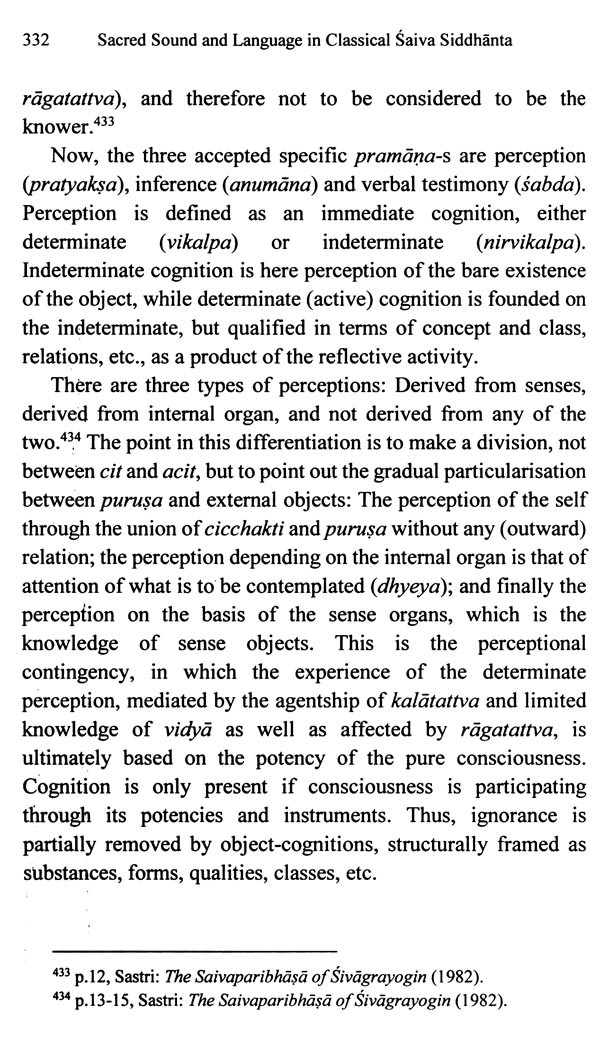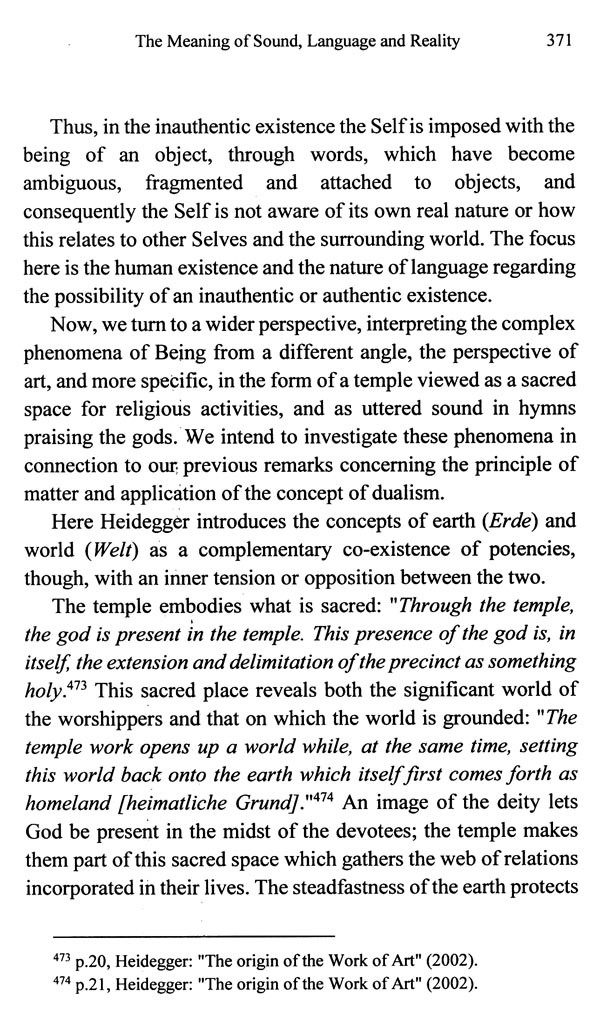
Sacred Sound and Language in Classical Saiva Siddhanta- A Hermeneutical Approach to Philosophy and Ritual in Early Dualistic Saivism
Book Specification
| Item Code: | UAB811 |
| Author: | Mikael Stamm |
| Publisher: | Motilal Banarsidass Publishing House, Delhi |
| Language: | English |
| Edition: | 2022 |
| ISBN: | 9789391430771 |
| Pages: | 418 |
| Cover: | PAPERBACK |
| Other Details | 8.50 X 5.50 inches |
| Weight | 460 gm |
Book Description
The author focuses on the translation of Nadakarika by Kashmiri Bhatta Ramakantha, which formulated a theory of sound, speech and meaning. This is explained and highlighted through a discussion of three opposing Indian traditions: The ritualistic Mimamsa, the logicians of the Nyaya- tradition, and the idealistic school of the grammarian Bhartrhari. The text is analyzed and interpreted as an important contribution to the role and nature of speech in relation to its hidden source, the true self and the outer world.
It is the author's intention to show that the tradition of dualist Saiva Siddhanta implies a view on language as a manifestation of an excess of cosmic expressiveness, which the author further connects to the crucial initiation ritual, the alkies., which shows the theory of nada (subtle sound) in action through the application of holy mantras. Thus, in the final inter- portative part, the path of liberation is seen as an event in a field in which speech manifests, rooted in both ignorance and divine visions. This is related to the later Heidegger's view on art, through which the possibility of the (re) appearing of gods is given.
When going through the history of Western philosophy in search for a counterpart to the Samkhya tradition, such a system is not easily to be found. But I am reminded of the words of Hans Jonas in praise of Gnosticism and the possibilities of a dualistic outlook: "Whether a third road is open to it [the spirit of modem times} - one by which the dualistic alienation can be avoided and yet enough of the dualistic insight saved to uphold the humanity of Man to explore this is the task of philosophy".
This emergence of a subtle thought may be viewed as an ephemeral inner appearance or maybe as a manifestation of a self, either way, from the point of this preliminary level an initial movement, is there, like the movement of a sign appearing as itself as well as pointing to something else. The thought, without beginning or end, becomes word and the word enters a world as a meaning reflecting other meanings, expressed by a stream of words, all pointing to their common field of subject. They may emerge as speech or, as in this instance, as a manuscript which has itself as its subject. As thought it projects itself in a limited text, which,' though potentially capable of assuming an infinity of meanings, develops into concepts and relations, qualifying itself with specific meanings and accentuations, acquiring the form and structure of a text, and in this case positing a subject pointing back to itself with a purpose to grasp its own nature, to catch itself.
1.1 The nature of the proposed subject
Thoughts that pushes forward present themselves as objectively accessible audible or visible words and sentences, which are our only means of seizing, holding, analyzing and communicating, and ideally producing knowledge through new combinations of previously established words and word- meanings. If the subject covered is itself, i.e. the nature of the words, it adds an additionally problem to its field, a problem which may be viewed as both strength and a weakness: That which is the subject of this text is also that which is both means of its production and the product itself. It seems to belong to the closest and most intimate part of a self, in the form of an author as well as a reader and everything between the two; we cannot form and express a knowledge of ourselves and the world without language, and it seems that every form of knowledge and act, including the emotions attached to them, are embedded in a linguistic structure, even before any consciously or explicitly framed sentences are formed.
On one hand, language seems to be as close to us as our own consciousness, impossible to objectify due to its nature being a '. condition of our experience as such. On the other hand, language often assumes forms which seems to be derived from the opposite; as something which stands out as an intersubjective accessible self-moving object, which can be studied through established formal rules and methods, thus connected to an entirely different domain than what we normally perceive as our selves.
Book's Contents and Sample Pages
